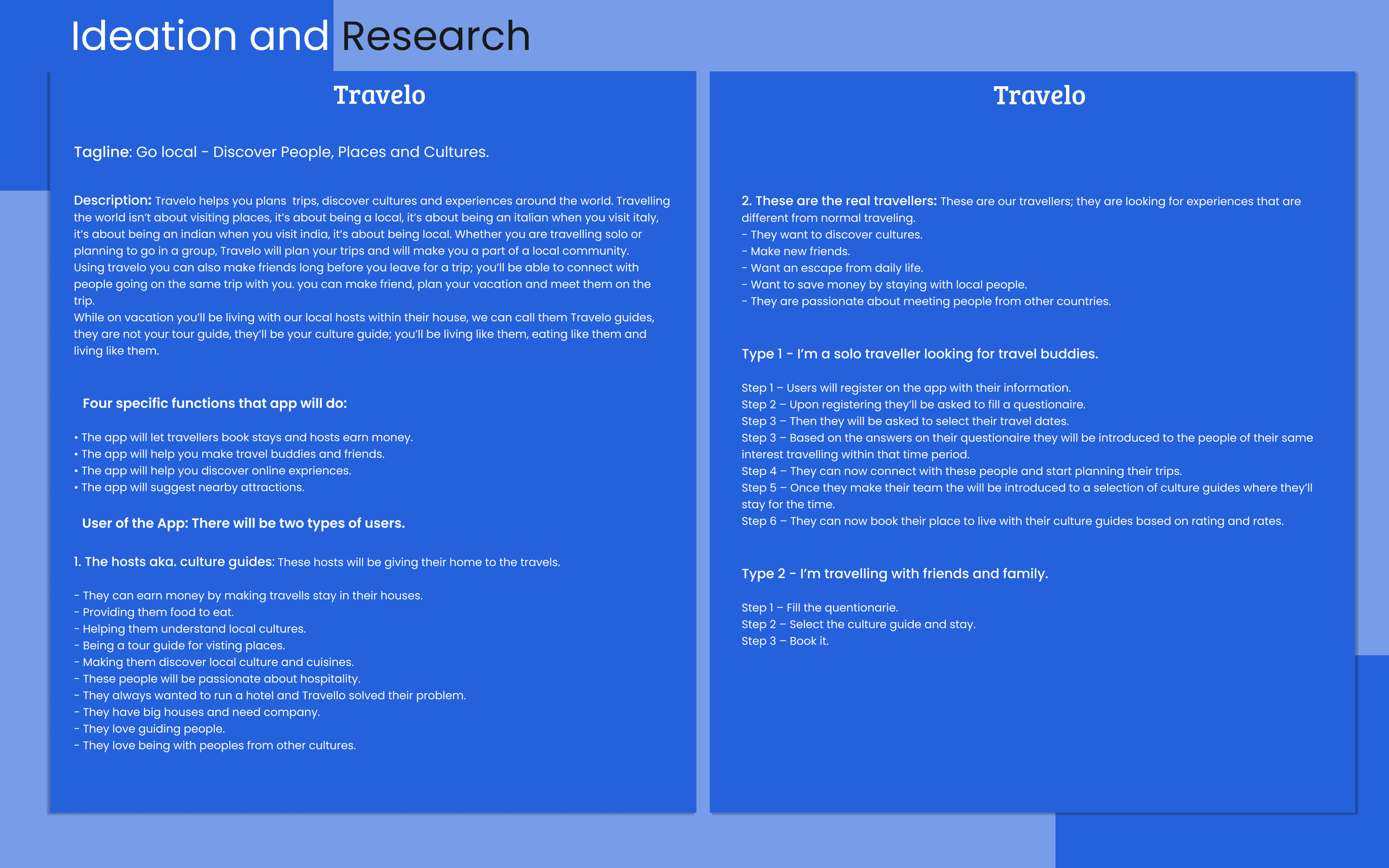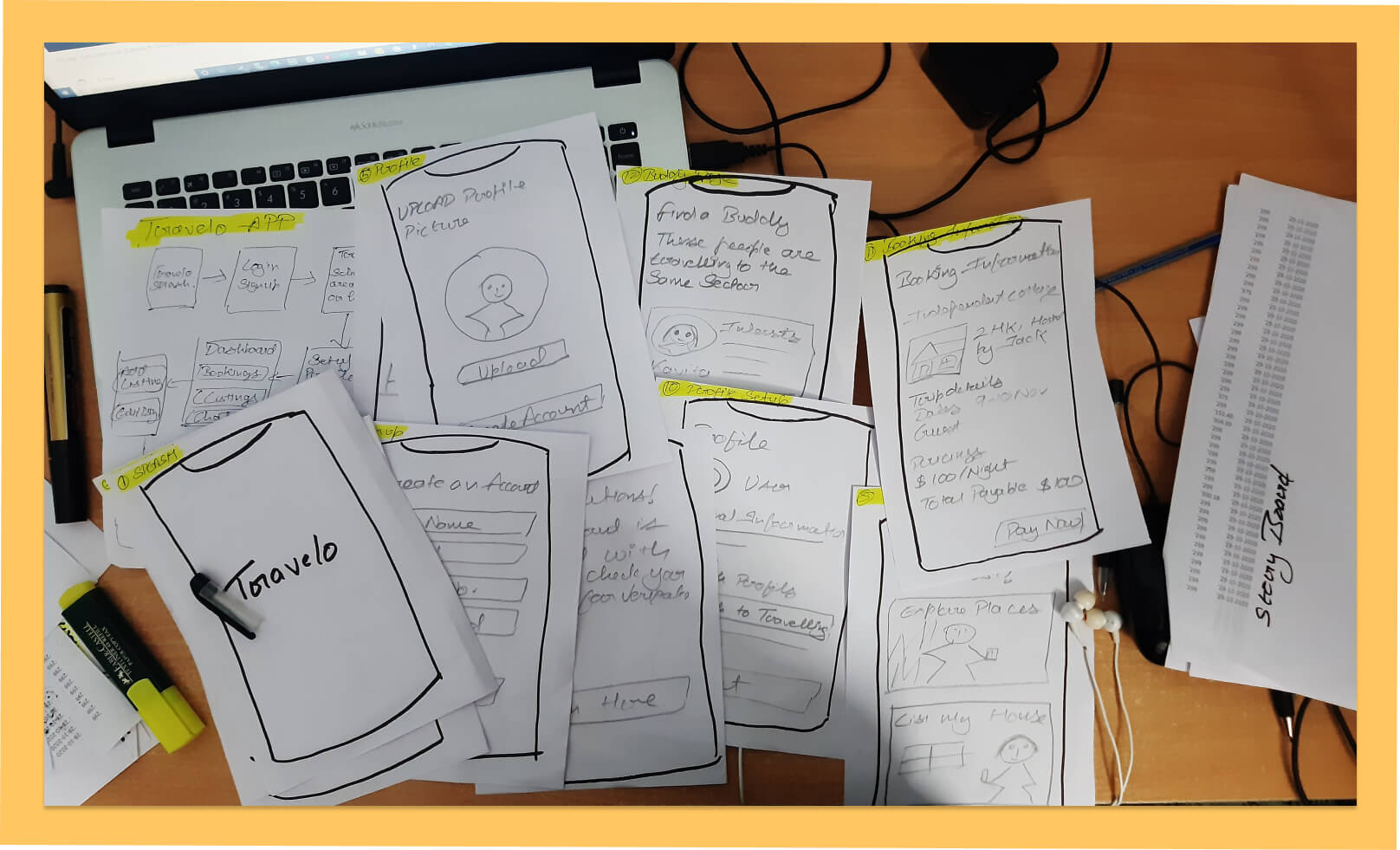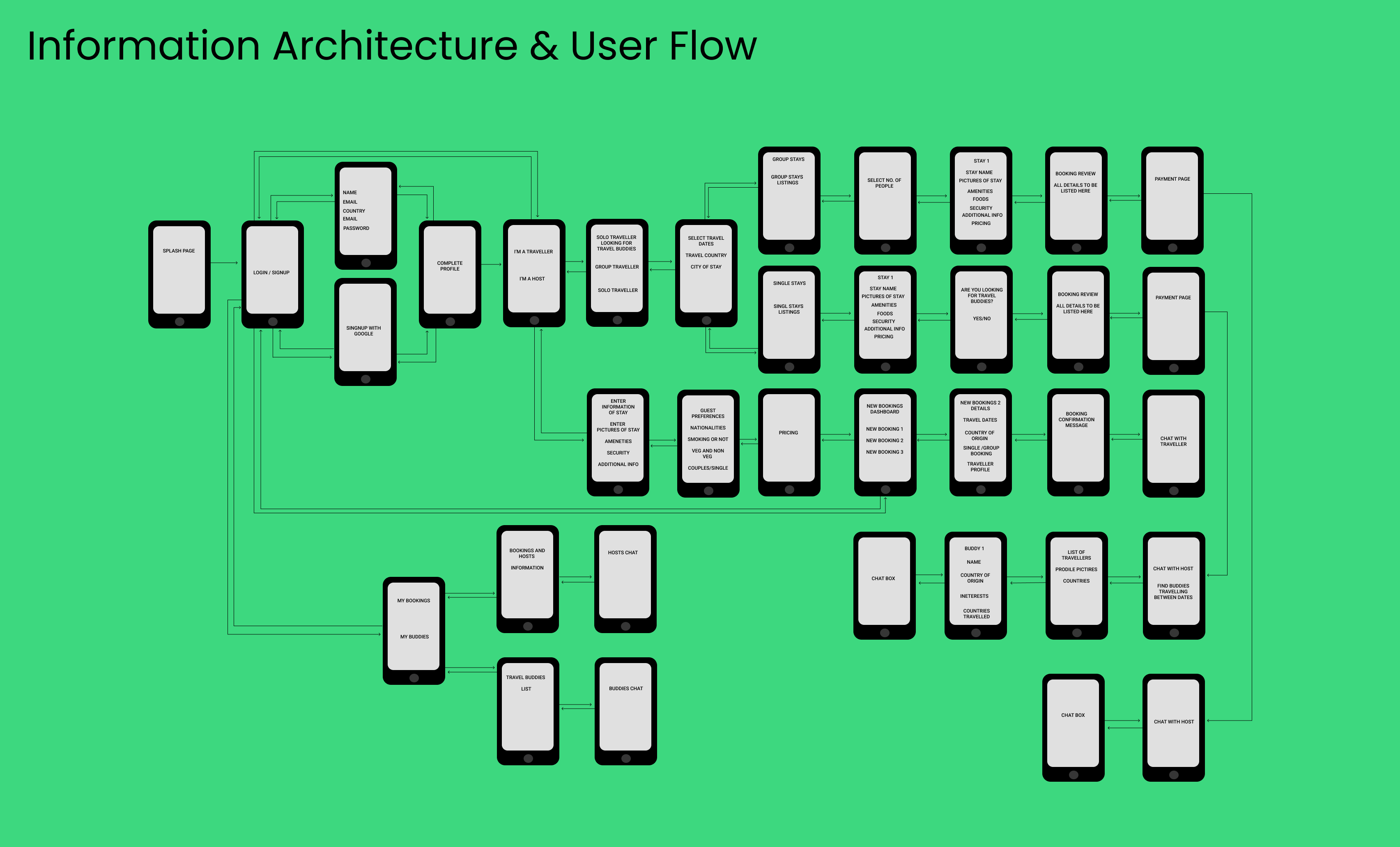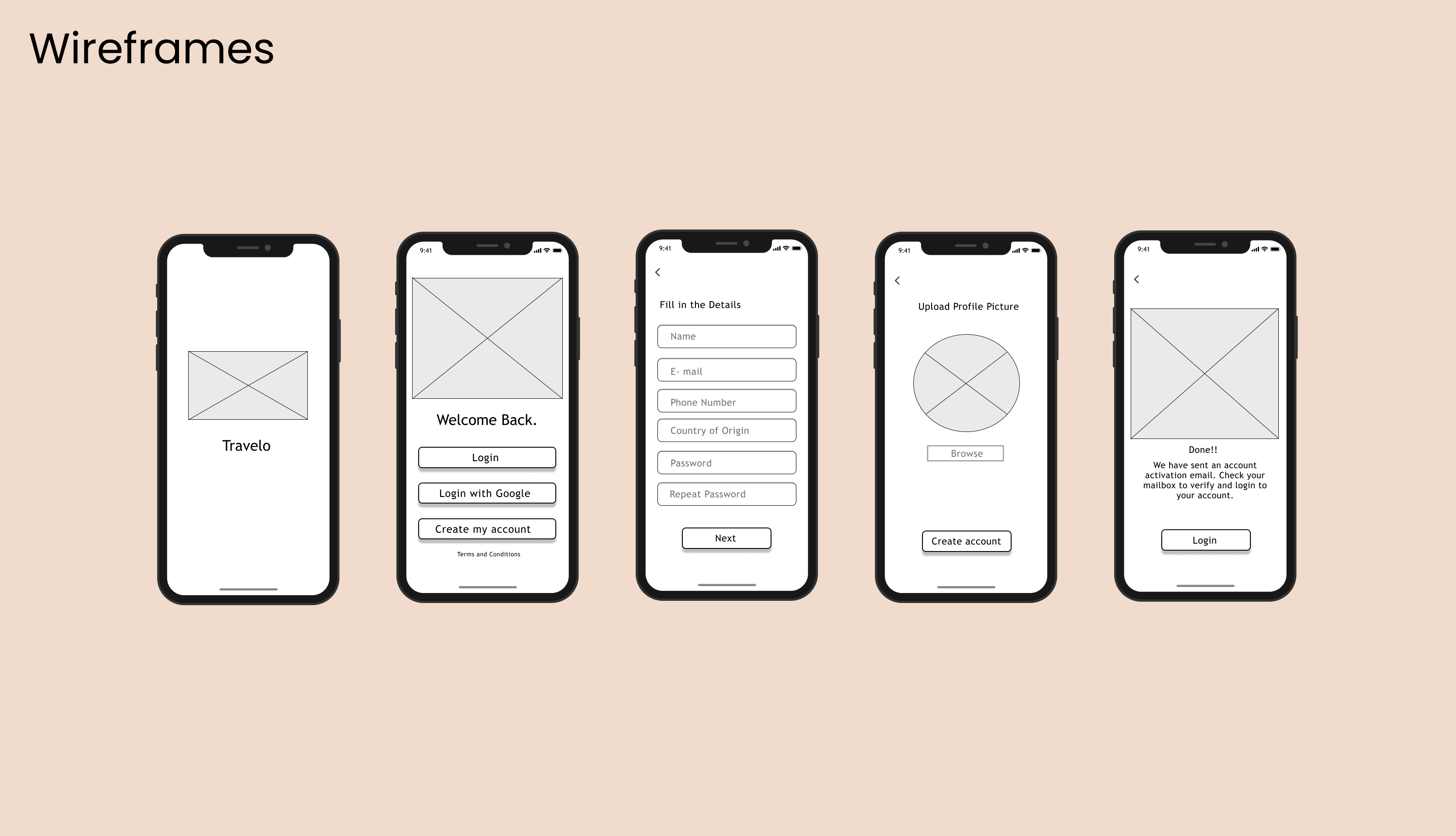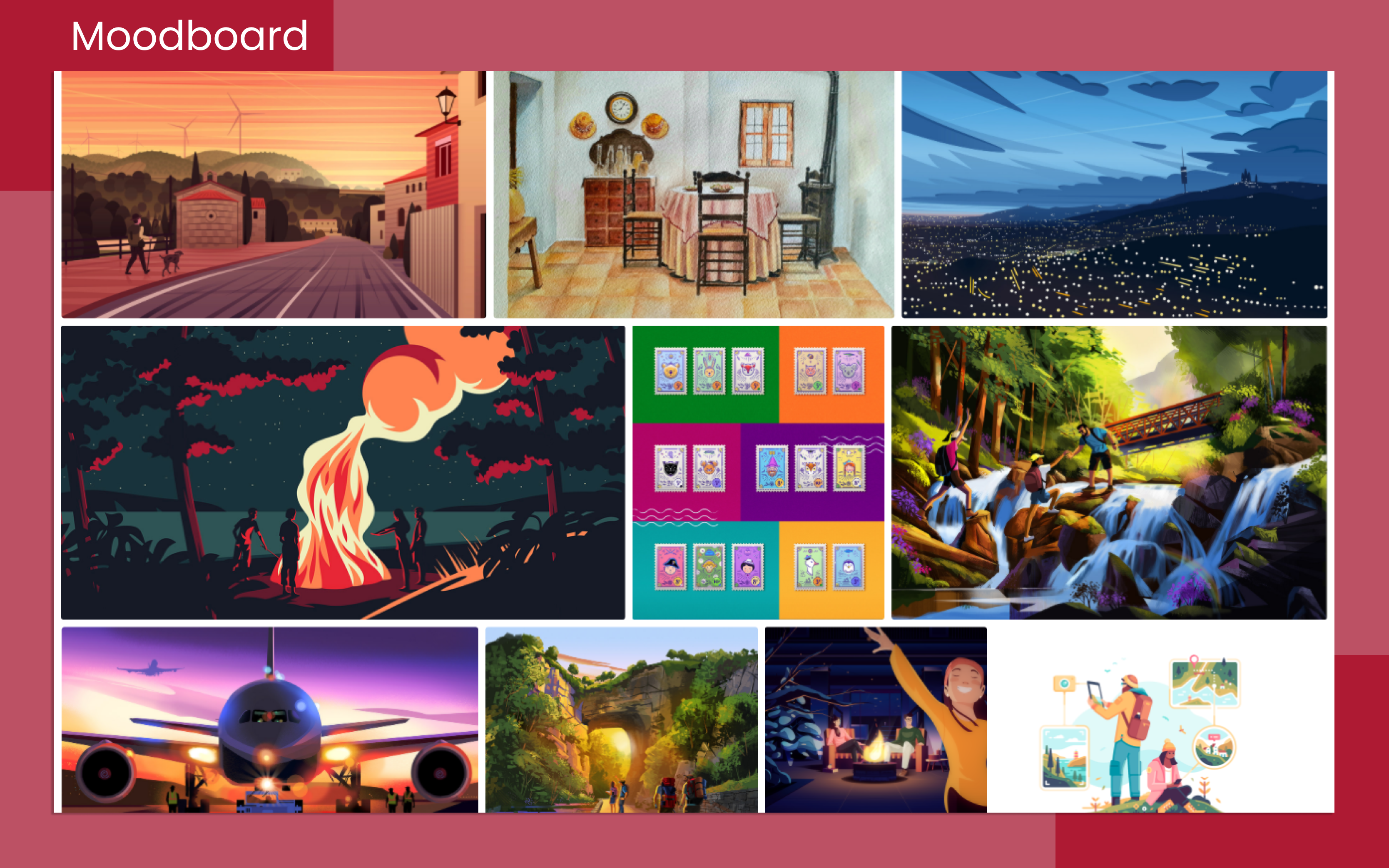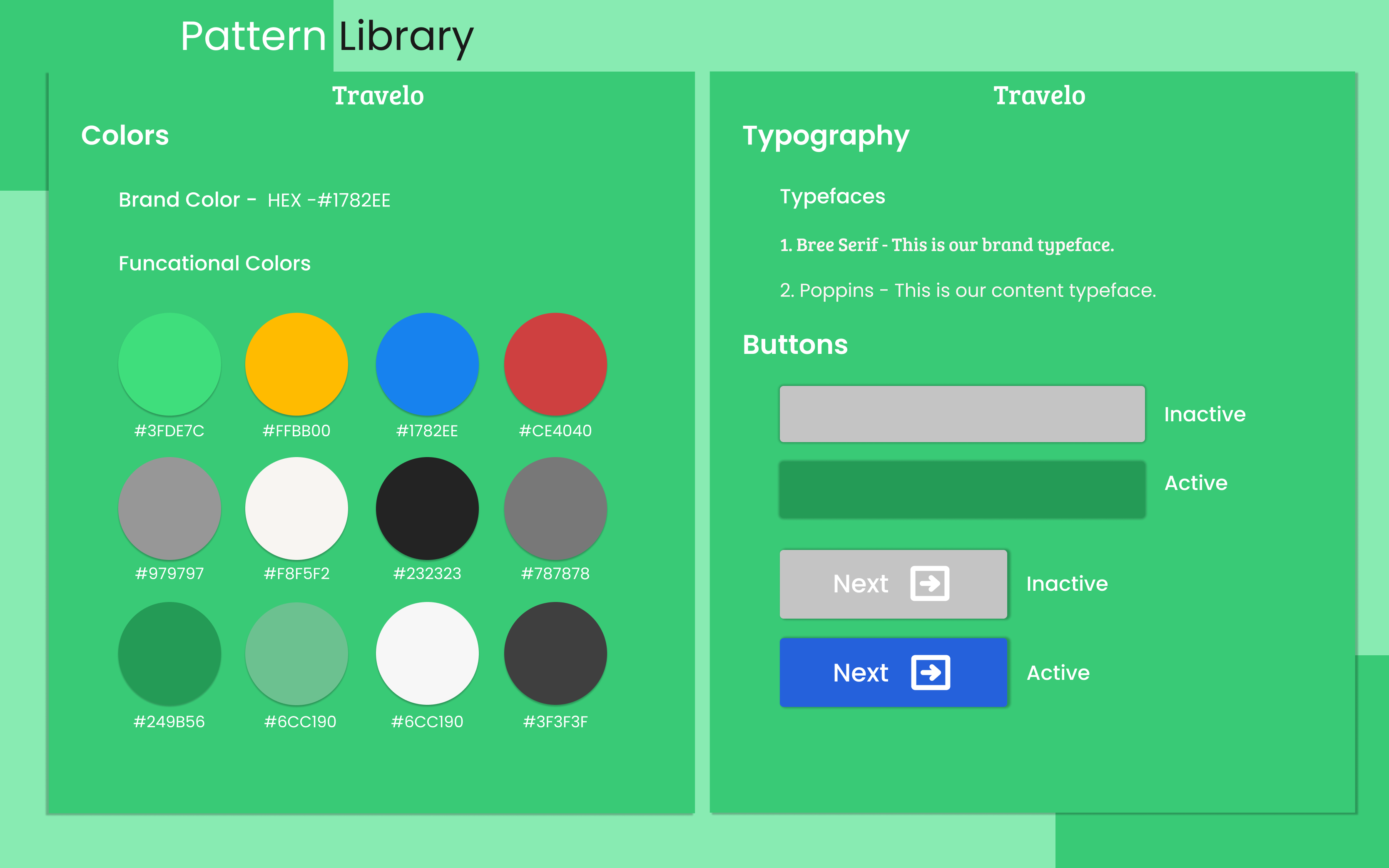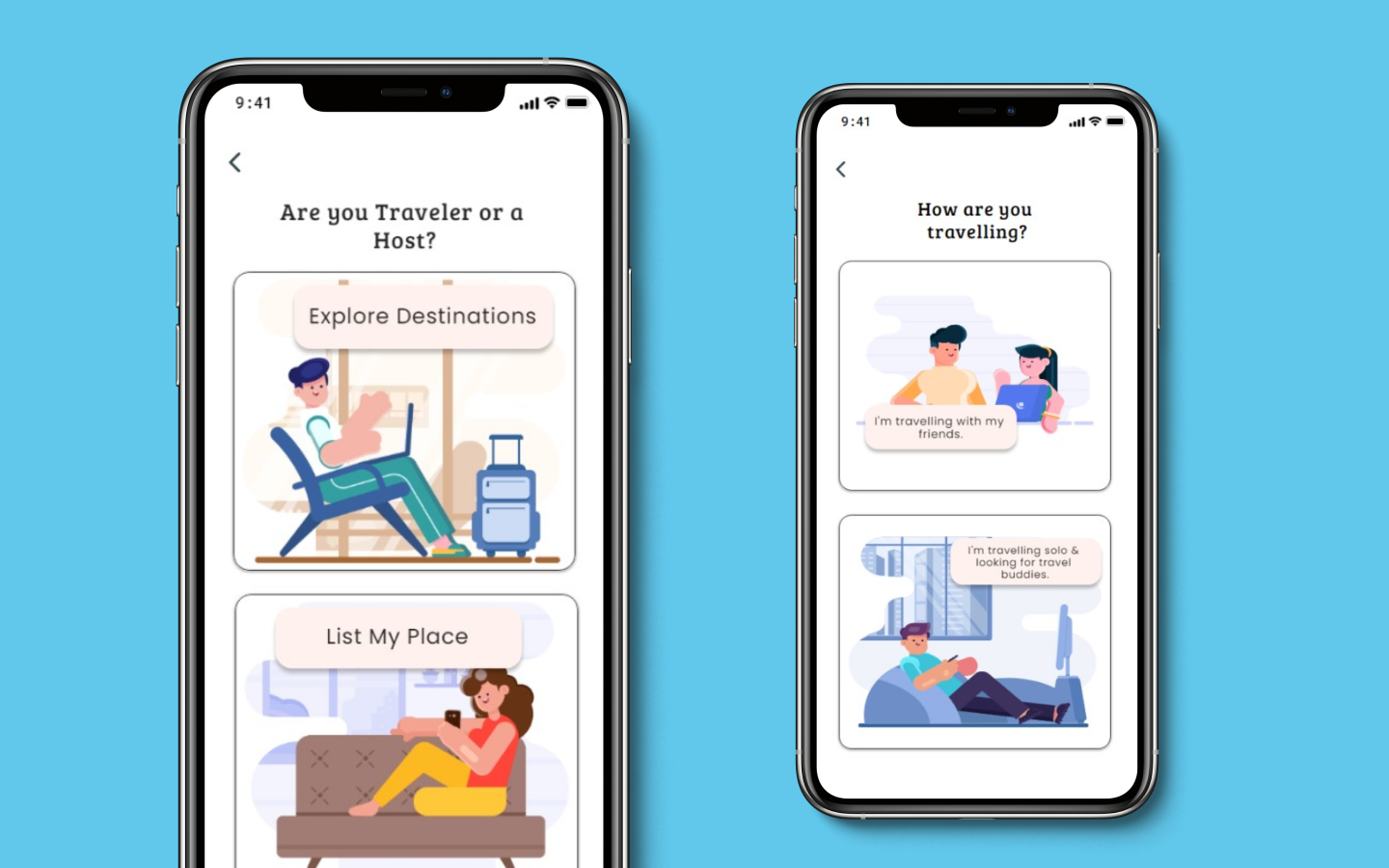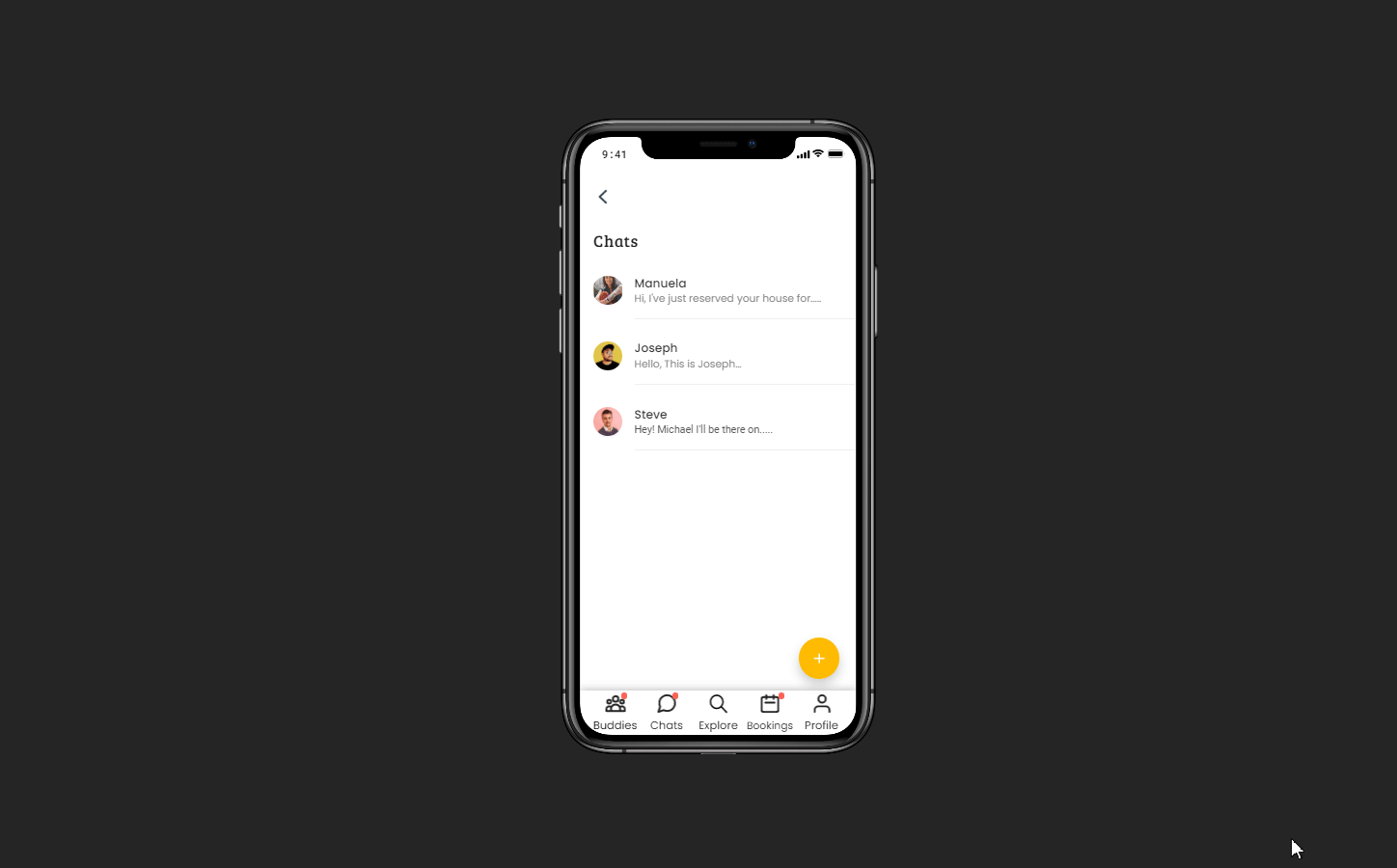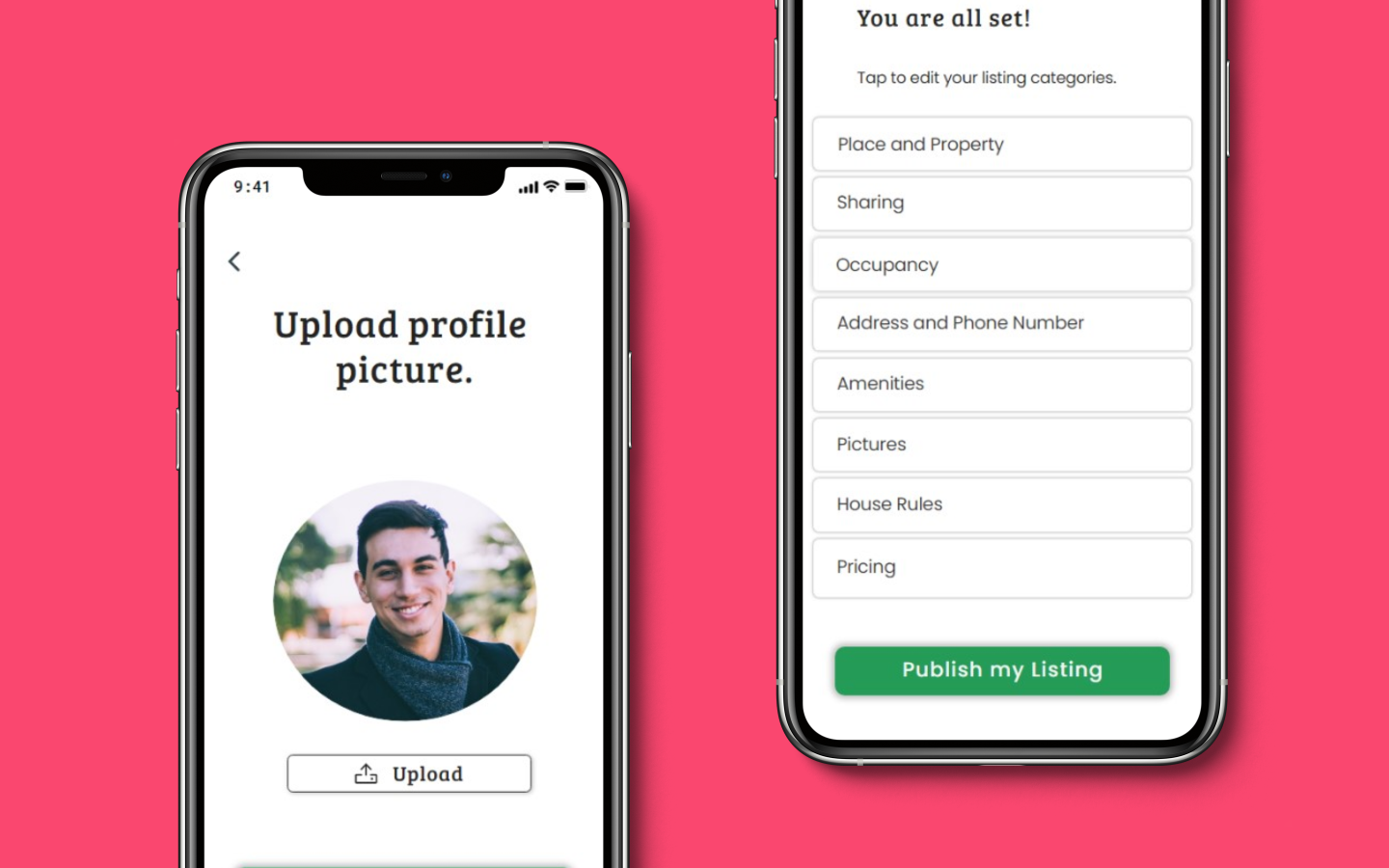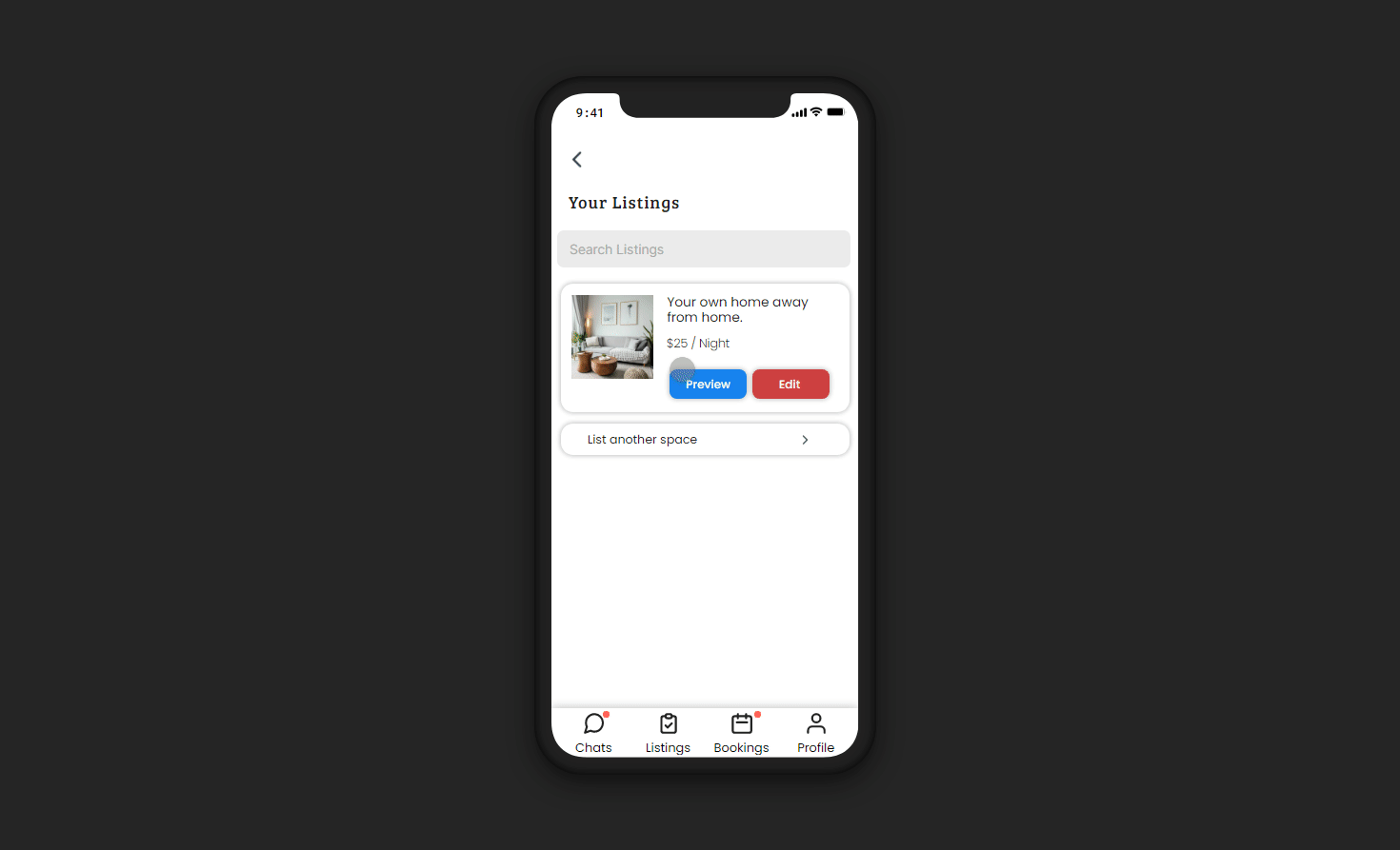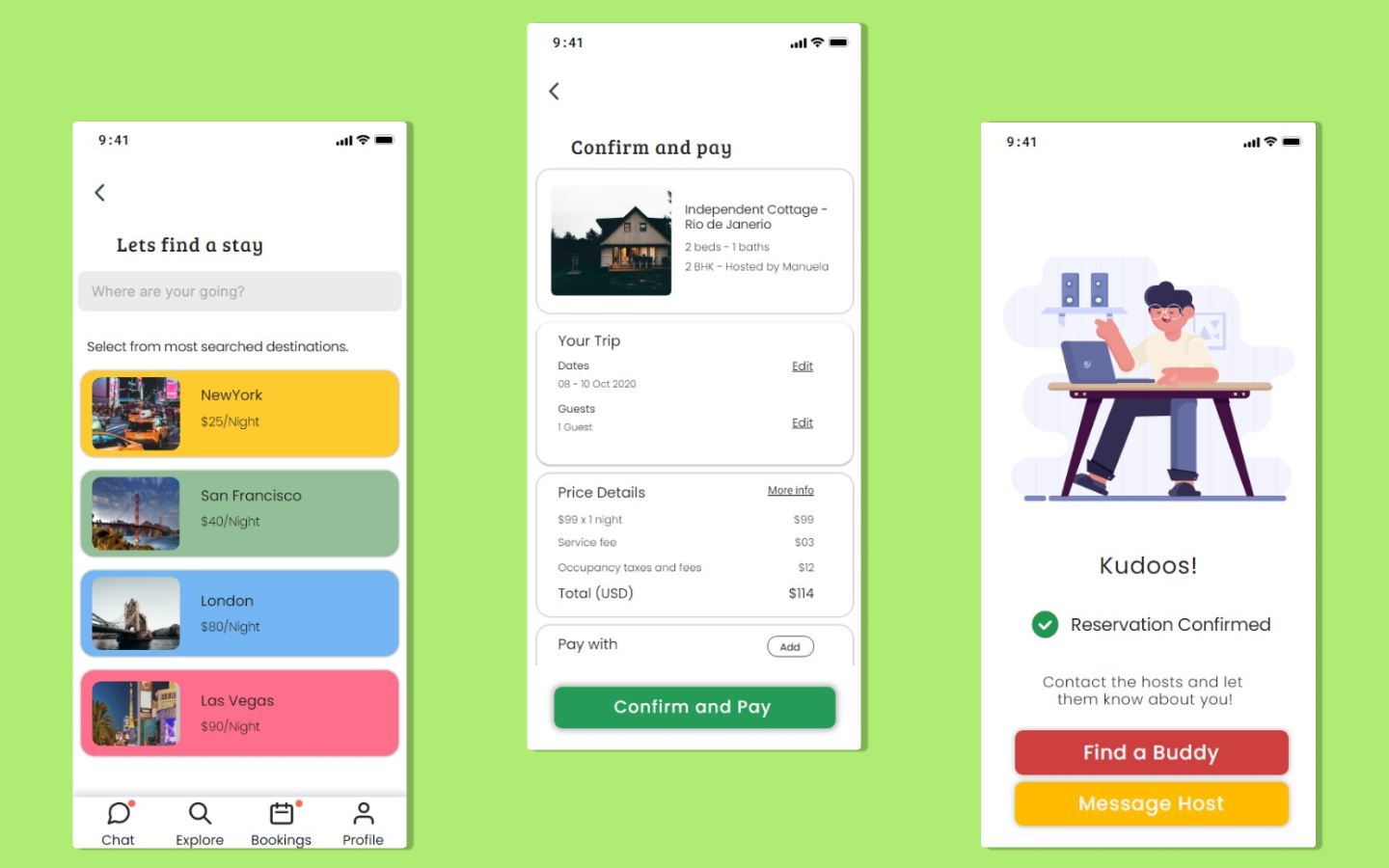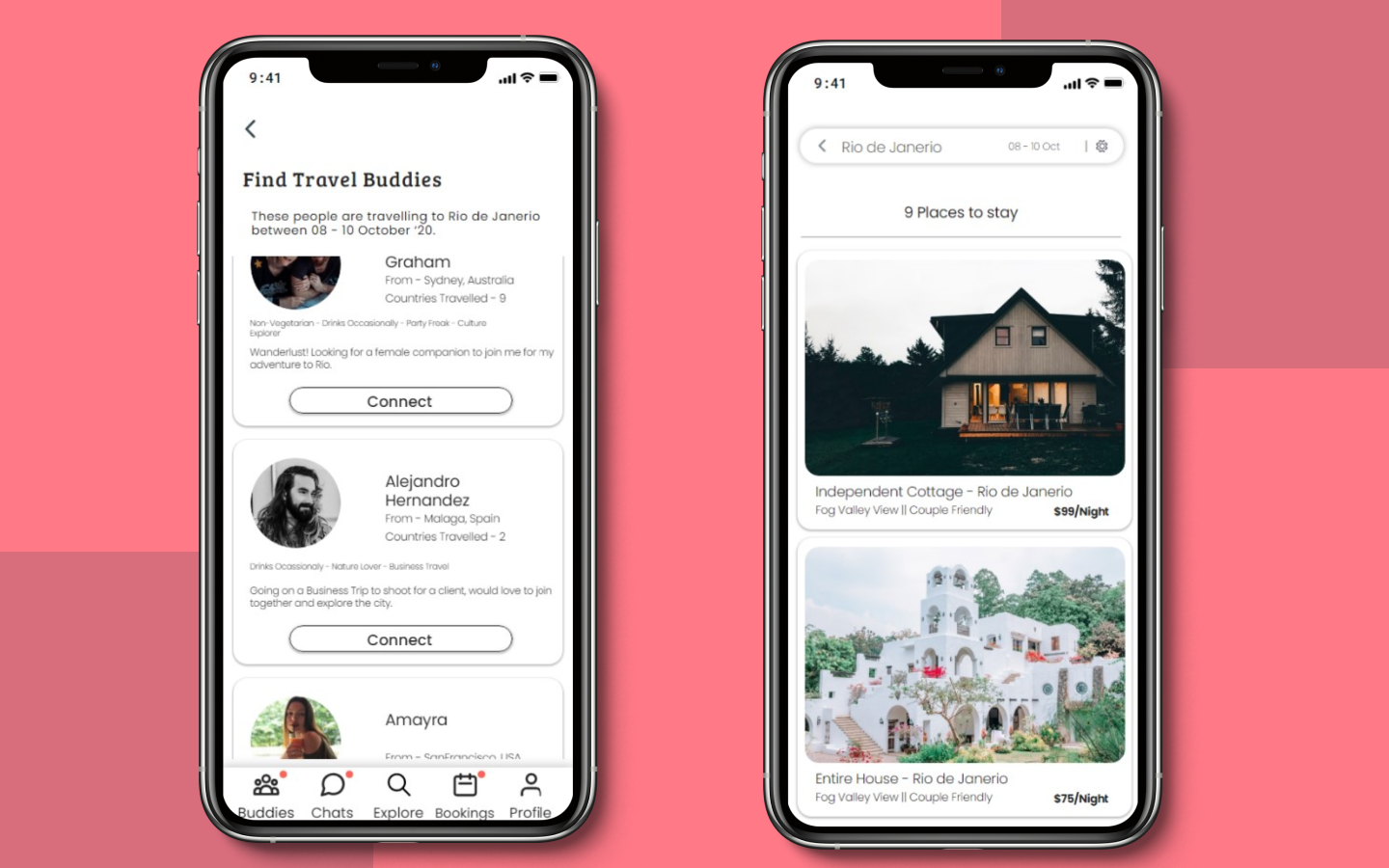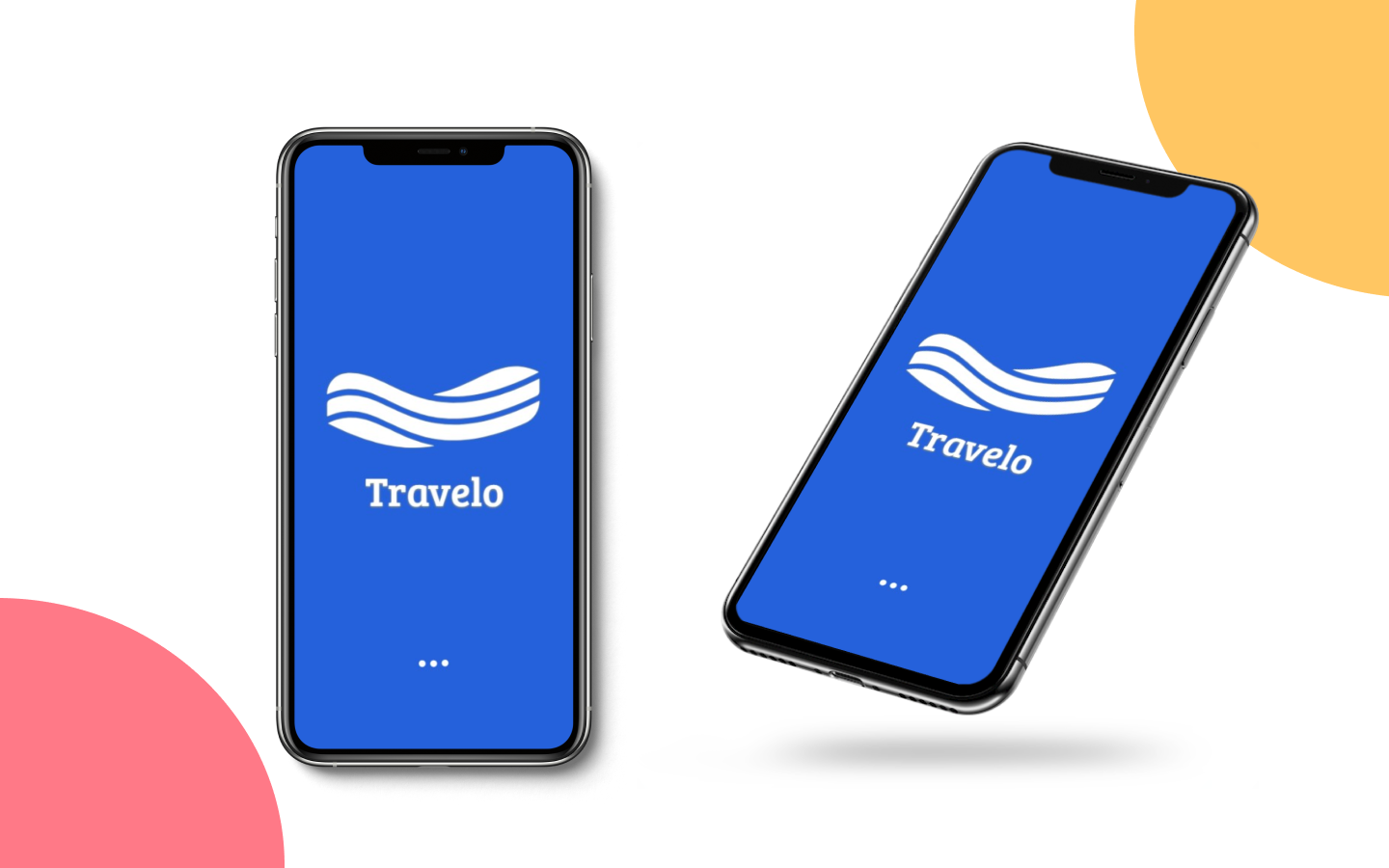The idea behind Travelo is to integrate online hospitality marketplace with offline social meetups.
What makes Travelo Different from other travel and hospitality applications?
Apart from being a traditional hospitality app, Travelo allows solo travelers to connect with people travelling the same place for the same period of time. These people can come from different nationalities and may speak a completely different language. These people can become companion for your next trip to a faraway country.
Travelo give you Travel Buddies long before you board the flight till the time, they become a part of your unforgettable memories.
This is the magic of Travelo! You make real friends for life!
Product Strategy User research Product design Interaction Design UX Copywriting
2020
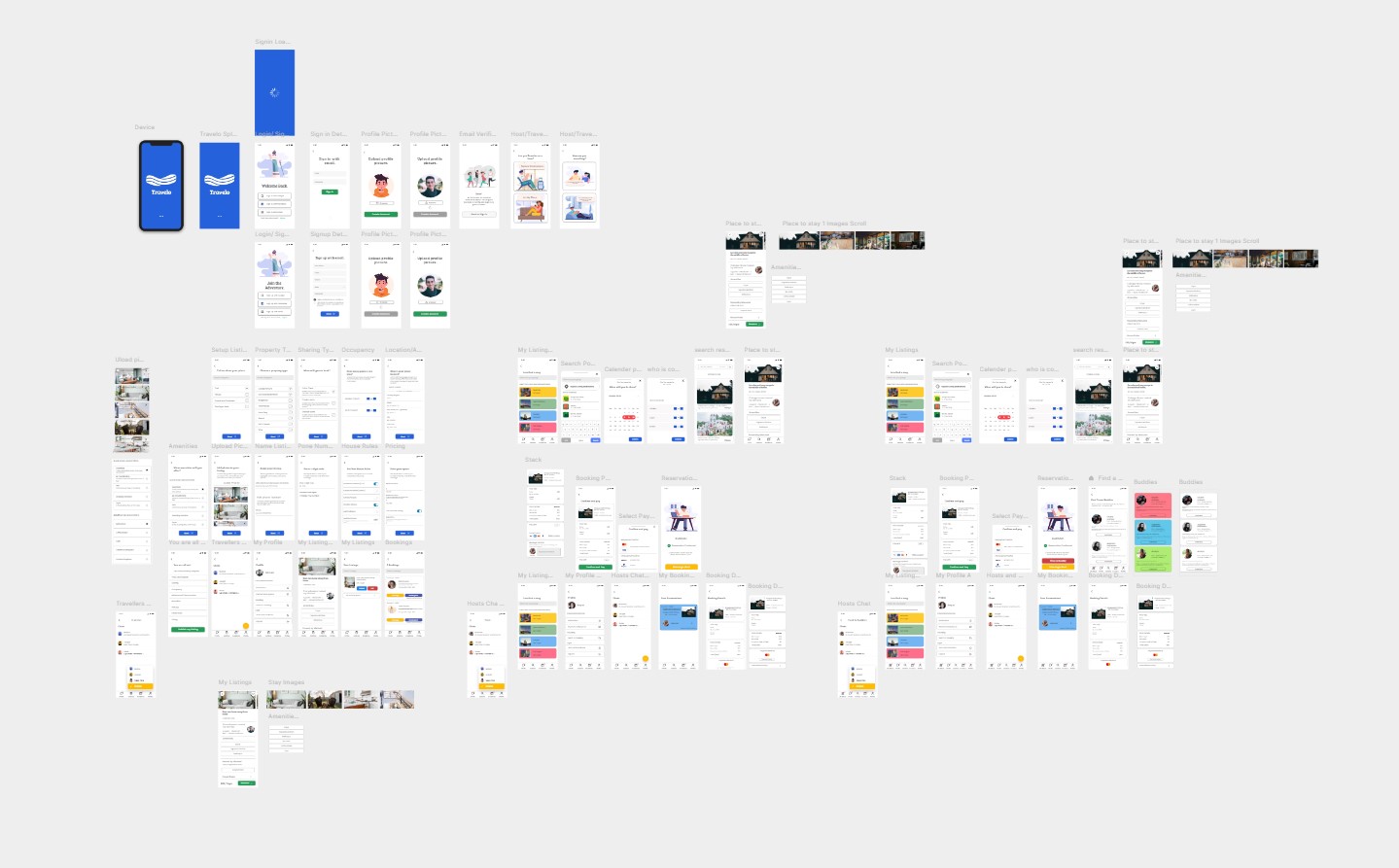
This personal project is a part of an online design specialization. The learning objective was to conceptualize and design a hospitality application.
Needfinding and Conceptualization: I'm a social human being, who enjoys making new friends; however, in 2019, I had a cultural clash when I met people from all over the world and discovered how wonderful it is to spend time with them and how important it is for us to have a global perspective.
What if I could go on a solo trip and meet people from all over the world who share my interests?
That's incredible! Why hasn't anyone else thought of this before? Let's do it!
Although the app allows for group bookings, it is primarily designed for solo travelers! As a result, it was given the name Travelo, which means "Travel Solo."
Research and Strategy: Because this project's concept was my inner calling, I took on the role of user and began exploring various apps in the Google Play Store. I audited some of the most popular hospitality apps, such as Airbnb, Booking.com, and HouseTrip, with the goal of understanding how they designed the app user interface and how these apps connect users all over the world.
After researching these apps, I came to the conclusion that making the app exclusive only to solo travelers will result in less traffic and may prevent some hosts from preferring Travelo over other apps that provide them with a diverse range of customers. As a result, I came up with an alternative solution: the app could ask users if they are traveling solo or in a group.
Storyboarding and Paper Prototyping: I drew up a rough storyboard to visualize how the app will guide users from problem to solution, as well as how hosts will use the app to list their spaces and taking reservations.
With my findings from the research and storyboards, I started working on the information architecture; by this time, my idea had grown so complex that it took more than 35 screens to create the app’s information architecture.
I used the IA to create a paper prototype to get feedback on the login and signup process and to see if I needed to make any preliminary changes.
Wireframing and Moodboarding: After all of the research and synthesis, I created the app’s wireframes and moved on to deciding on the app’s look and feel.
I devised a plan to create two mood boards, one with all animated images and the other with real-life photographs, to determine the app’s look and feel. I worked with my peers to figure out which look and feel would work best for the app, and they recommended the animated one, which I later used to create the pattern library.
Mockups and Digital Prototype: By this point, I had gathered all of the necessary resources to begin work on the digital prototype. I used Figma to create all of the necessary mockups for prototyping and then used Framer to turn these mockups into a highly interactive digital prototype.
